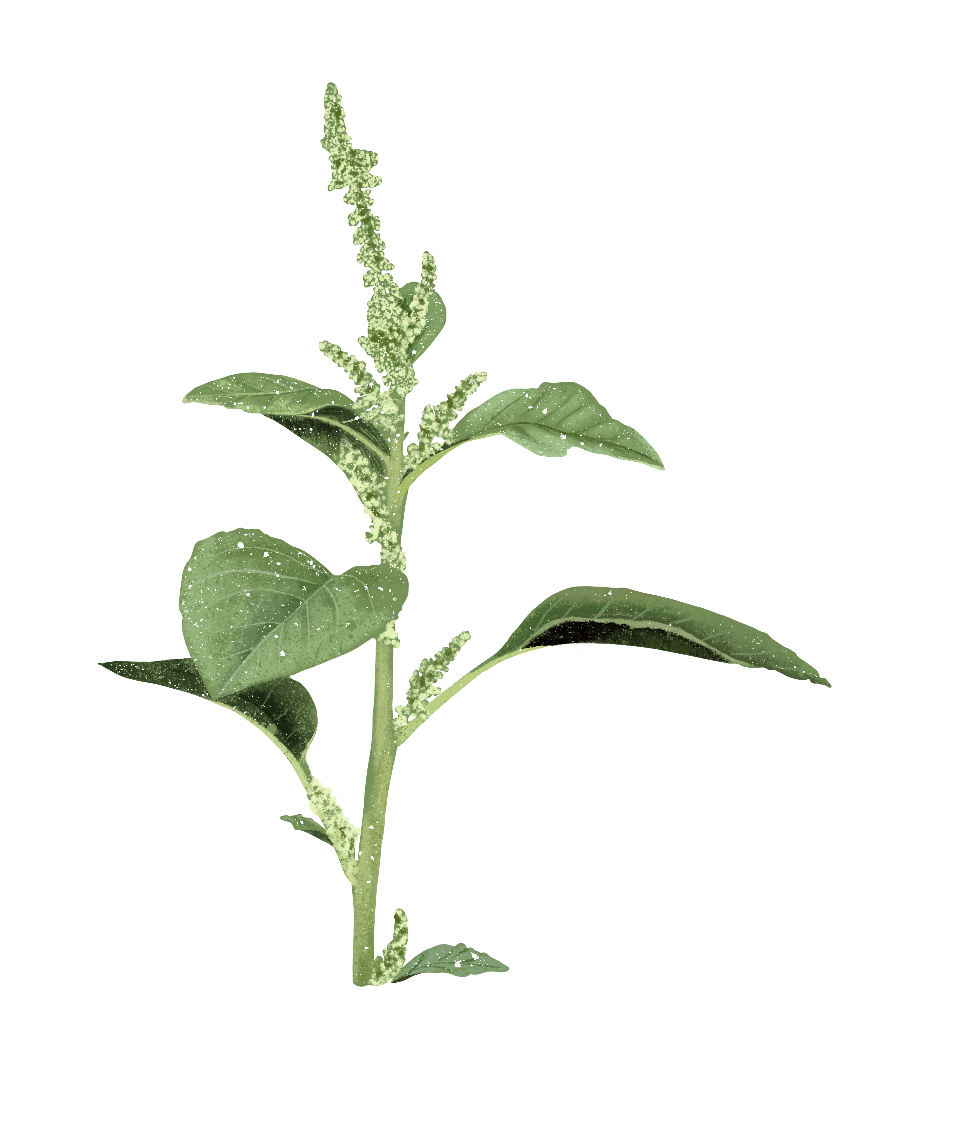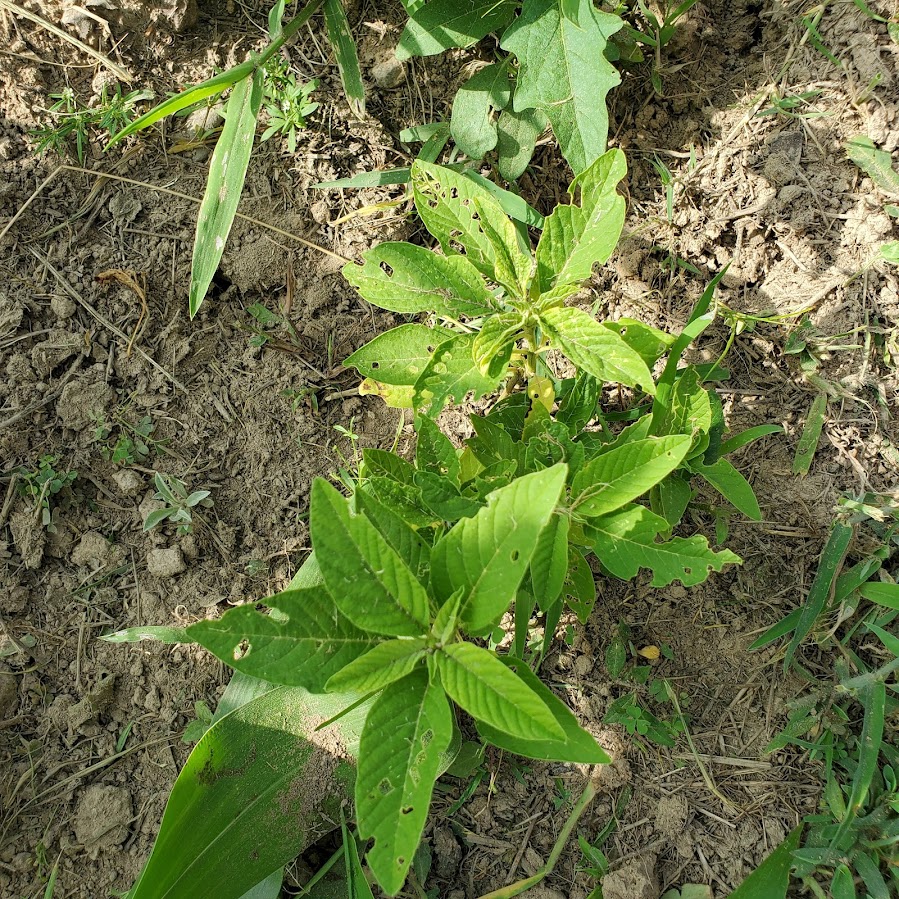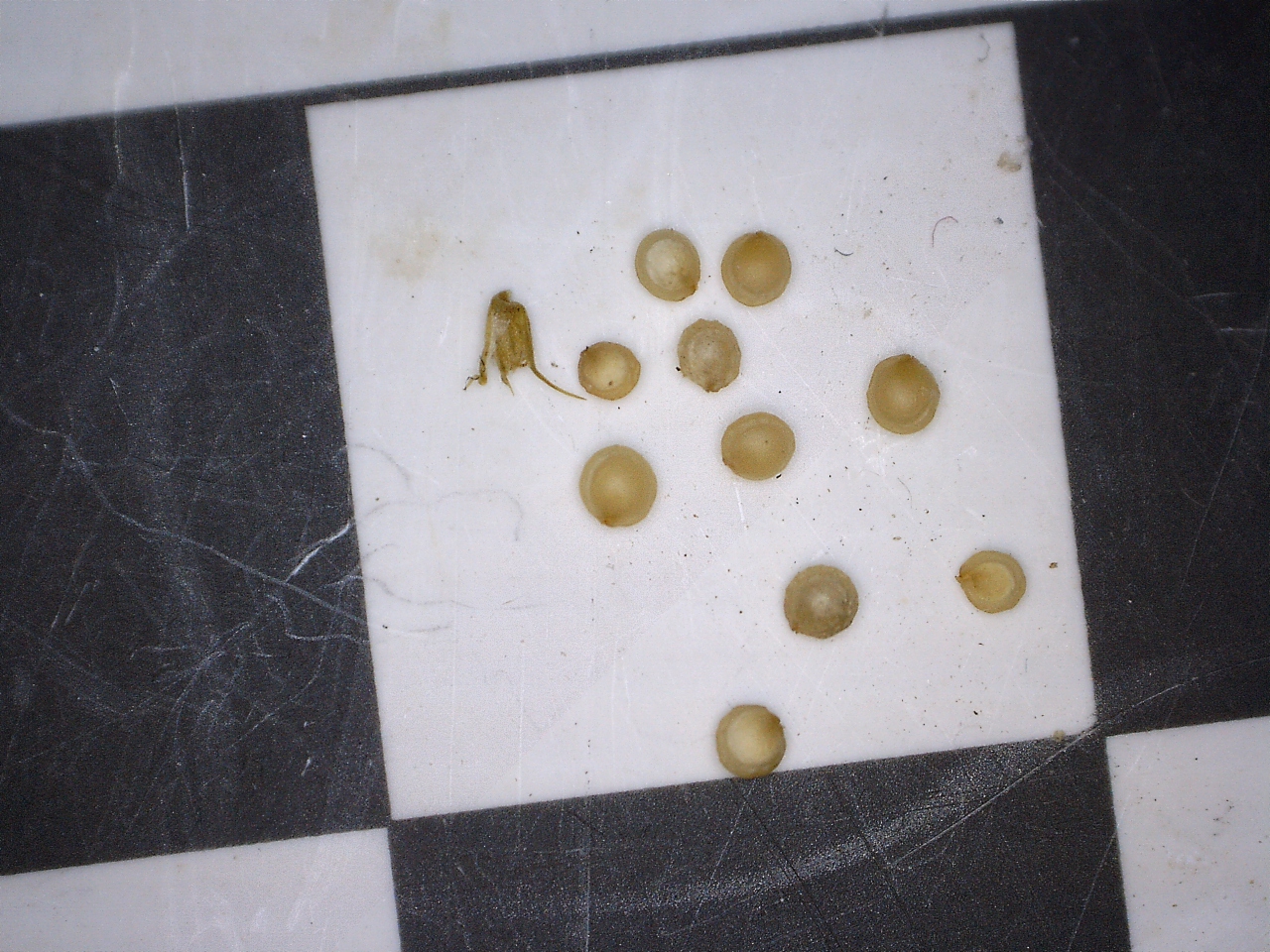
Amaranth
(Amaranthus hypochondriacus)
Indigenous people living in Arkansas used both the leaves and the starchy wild seeds of the amaranth plant for food. Light colored, domesticated amaranth seeds have been identified from Ozark bluff shelters dating to as early as 1000 B.P. Amaranth flowers appear in the summer, and the seeds form in late summer/early fall. Amaranth seeds are a balanced source of carbohydrates and protein with an efficient harvest rate. In other words, although amaranth seeds are quite small, it is relatively easy to harvest and process them, making it a valuable source of food.

Young Amaranth

Young Amaranth

Flowering Amaranth

Amaranth seeds

Flowering Amaranth

Amaranth Harvest
Amaranth References
Fritz, Gayle J.
2019 Feeding Cahokia: Early Agriculture in the North American Heartland. University of Alabama Press, Tuscaloosa.
2007 Pigweeds for the Ancestors: Cultural Identities and Archaeobotanical Identification Methods. In The Archaeology of Food and Identity, edited by Katheryn C. Twiss, pp.288- 4:307. Center for Archaeological Investigations, Occasional Paper No. 34. Board of Trustees, Southern Illinois University.
1994 In Color and In Time: Prehistoric Ozark Agriculture. In Agricultural Origins and Development in the Midcontinent, edited by William Green, pp. 105-126.
1986 Prehistoric Ozark Agriculture, The University of Arkansas Rockshelter Collections. Ph.D. dissertation, University of North Carolina, Chapel Hill.
1984 Identification of Cultigen Amaranth and Chenopod from Rockshelter Sites in Northwestern Arkansas. American Antiquity 49: 558-572
Gremillion, Kristen J.
2004 Seed Processing and the Origin of Food Production in Eastern North America. American Antiquity 69 (2):215-233.
Peterson, Frederick A. and Patrick J. Munson.
1984 Amaranth as a Food Source in Prehistoric Midwestern United States in Experiments and Observations on Aboriginal Wild Plant Food Utilization in Eastern North America, edited by Patrick J. Munson, pp.299-316. Indiana Historic Society Prehistoric Research Series.